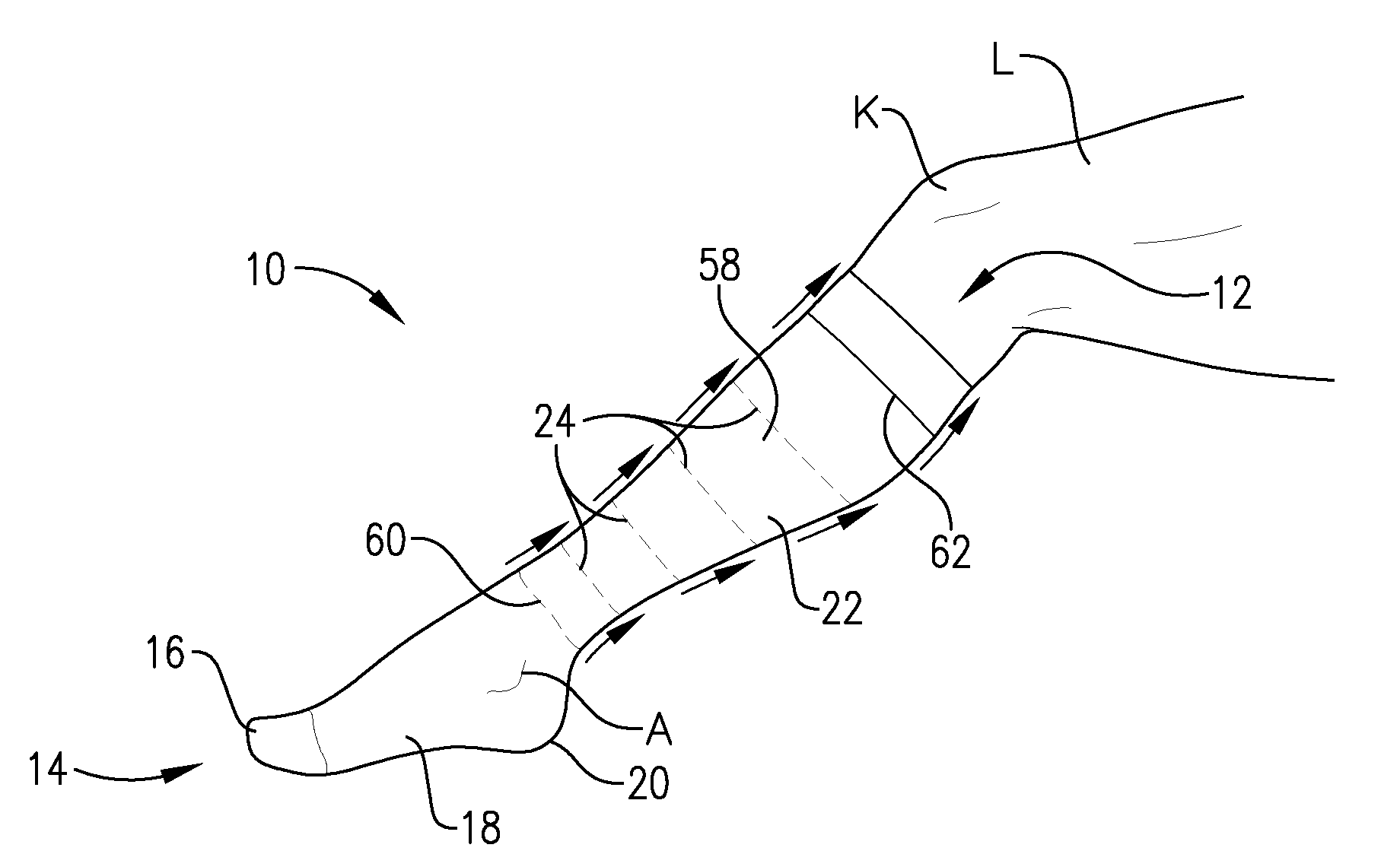Gradient compression hosiery knitted using corespun yarns
a compression hosiery and corespun technology, applied in knitting, textiles and papermaking, insoles, etc., can solve the problems of ineffective conformity of prior art gradient compression hosiery to wearers' legs when donned, particular unresolved deficiencies of hosiery,
- Summary
- Abstract
- Description
- Claims
- Application Information
AI Technical Summary
Benefits of technology
Problems solved by technology
Method used
Image
Examples
Embodiment Construction
[0016]Turning initially to FIG. 1, a knitted gradient compression hosiery 10 in the form of a trouser sock includes a proximal open end 12 and a distal closed toe end 14, and is received on a wearer's lower limb L below the knee K to provide therapeutic support for various conditions while being comfortable to don and wear. As will be shown in the alternative embodiment depicted in FIG. 2, the sock 10 can also be configured with different lengths such that the proximal end of the hosiery can be spaced at different points upwardly from the knee and can also be configured as pantyhose.
[0017]Turning to FIGS. 1 and 3, the sock 10 includes a toe section 16 adjacent the toe end 14, a foot section 18, a heel section 20, and a lower leg section 22, as will be discussed in greater detail. The sock 10 comprises a weft-knitted receptacle that is knitted into multiple courses 24 (several of which are shown schematically), with the courses 24 preferably including a core-spun yarn 26. The illustr...
PUM
| Property | Measurement | Unit |
|---|---|---|
| Elongation | aaaaa | aaaaa |
| Elongation | aaaaa | aaaaa |
| Elongation | aaaaa | aaaaa |
Abstract
Description
Claims
Application Information
 Login to View More
Login to View More - R&D
- Intellectual Property
- Life Sciences
- Materials
- Tech Scout
- Unparalleled Data Quality
- Higher Quality Content
- 60% Fewer Hallucinations
Browse by: Latest US Patents, China's latest patents, Technical Efficacy Thesaurus, Application Domain, Technology Topic, Popular Technical Reports.
© 2025 PatSnap. All rights reserved.Legal|Privacy policy|Modern Slavery Act Transparency Statement|Sitemap|About US| Contact US: help@patsnap.com



